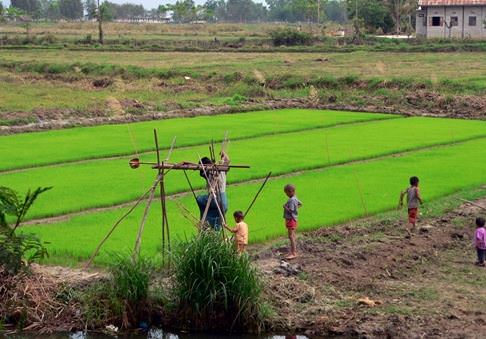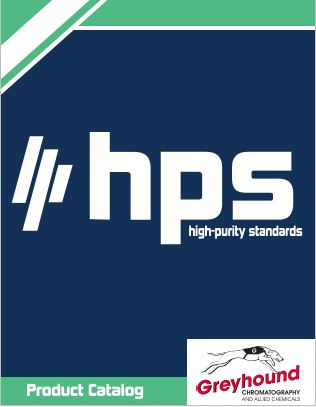Get a better picture of Thifluzamide Pesticide
Many of the most important pesticides work to kill insects and other creatures that can interfere with successful farming. But it is not just weevils and bugs that can limit a harvest's yield, in many places fungi can be an even greater danger.
Fungal diseases are one of the most significant problems for rice farmers. Although rice is grown in nearly every country that has a climate to support it, rice production and its potential diseases are most important in Southeast Asia. Asia is the world's largest rice producer by far, growing about 90 percent of the world's rice, according to Food and Agriculture Organization of the United Nations' Regional Office for Asia and the Pacific.
This heavy reliance on rice production, both by the world on Asia and by Asia on this crop, underscores the importance of pesticides that can help tackle the fungal diseases that disrupt a normally successful harvest. The chemical thifluzamide has been found to be a successful fungicide with great uses for rice farming, and has become popular through Japan and Southeast Asia. Thifluzamide is also known as 2, 6-dibromo-4-(trifluoromethoxy)phenyl]-2-methyl-4-(trifluoromethyl)-5-thiazolecarboxamide or Thifluzamid Pulsar.
Although many people involved with pesticides, fungicides and chemical production may have heard of thifluzamide, there are a number details about this fungus killer that people may be unaware of.
Where did it come from?
A while ago, thifluzamide was found to be an effective chemical compound against rice fungal diseases, but its low dispersal rate made it suboptimal for large scale farming operations. However, before being produced by Dow AgroSciences, Nissan Chemical Industries, Ltd. and other Chinese manufacturers, Pennsylvania company Rohm and Hass patented a new use of the chemical for more effective fungicidal purposes.
Thifluzamide had a fairly low dispersal rate at moist rice farms because it did not travel through water well. The Rohm and Hass scientists patented a technique that altered the chemicals' crystalline structure to both make it more effective at eliminating fungi and efficient at traveling through water. These patents from the late 1990s outlined the process of creating the thifluzamide pesticide as well as the invention of the new thifluzamide compound with the altered structure.
However, both patents expired in the mid-2000s after failure to pay fees. In 2001, Rutgers University's IR-4 Project listed thifluzamide as an older crop chemical with new uses to fight fungus on rice and peanuts. It also can be used on potatoes, coffee, cotton and turf.
The effective fungicide's prominence may continue to expand as more countries get involved with its production and use.
Safe use
Like many chemical compounds, thifluzamide has an enormous upside for commercial farming, as well as a number of safety concerns when used in a lab setting. This underscores the importance of proper handling and safety protocols.
Caution should be used with thifluzamide and carbon oxides, sulphur oxides, nitrogen oxides as well as hydrogen fluoride or bromide gas, online lab advice site Guidechem recommended. Indigestion, inhalation, and eye or skin contact can cause damage or irritation. Contact lenses should not be worn when working with thifluzamide and firefighters should wear a breathing apparatus if there is a fire involving the chemical. Thifluzamide is incompatible with strong oxidizing agents and usually looks like a white or brown powder.
Scientists should wear gloves, eye equipment and proper body protection while handling thifluzamide. Although respiration protection is not necessary, it is a smart option in certain circumstances where dust is kicked up.
Thifluzamide can be very detrimental to the environment and water-based ecosystems. It is marked as "Environmentally Dangerous" during shipping. Farmers and chemists should be aware of these potential environmental dangers and make an extra effort to use thifluzamide correctly and safely to avoid pollution.
Thifluzamide is a powerful and effective fungicide. When used safely and correctly it can be effective on rice and other crops because of improved water dispersal techniques.
CONTACT US
Tel: +44 (0) 151 649 4000
Email: marketing@greyhoundchrom.com
FOLLOW US
YOU MAY ALSO BE INTERESTED IN OUR NEWSLETTER
About the Author
Susan Massie, Sales & Marketing Director, Greyhound Chromatography and Allied Chemicals Email: sue@greyhoundchrom.com
Susan Massie is the Sales & Marketing Director for Greyhound Chromatography and Allied Chemicals, affectionately known as 'Greyhound' in our scientific community. Greyhound was founded by Susan's husband Paul Massie more than 40 years ago, Susan hasn't been in the business for all of that time but has been involved with Greyhound for over 17 years. Greyhound continues to grow, expanding into new markets and taking on the challenges of our ever changing environment. It's heartwarming to witness the world waking up to the fact that we are damaging our planet on a daily basis. Every action we take has a direct effect on our planet and the world we leave behind for future generations. Susan is passionate about climate change and is happy to work in an industry that can have a direct effect on reducing the impact of our actions on the environment. All of the team at Greyhound take our responsibilities very seriously, the products that we supply are used by the world's leading scientists and chemists as they endeavour to monitor and repair the environment. All is not lost, if we all take responsibility for our actions, from reducing our waste and reusing or recycling our material collateral we can make a difference. The internet is full of useful advice and guidance, Susan is proud to contribute to that wealth of knowledge whenever she can.
Greyhound prides itself on personal service which provides prompt, efficient, cost-effective, safe delivery of all products. Greyhound provides technical advice and distribution of Certified Reference Standards and Materials, Laboratory Consumables, Solvents and Reagents across all scientific disciplines. Greyhound Chromatography offers over 1 Million products from its UK warehouse. The team at Greyhound are proud to support the work of the world's leading scientists and chemists as they challenge the abuse of our planet and try to make a difference to the world we leave behind for our ancestors.
You can view Susan's Linked In Profile here https://www.linkedin.com/in/susan-massie-79ab4121/


















